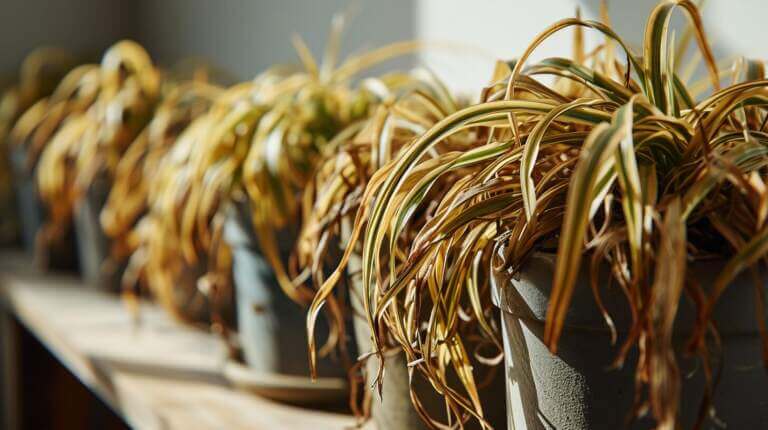Why Does the Venus Flytrap Carnivorous Plant Eat Insects: The Evolutionary Benefits
The Venus flytrap, scientifically known as Dionaea muscipula, is a carnivorous plant that has evolved unique adaptations to eat insects. Charles Darwin’s groundbreaking research on insectivorous plants revealed that they possess ingenious structures that trap, digest, and absorb the nutrients from their prey.
The Venus flytrap is the most sophisticated of the carnivorous plants, with its traps snapping shut in a fraction of a second to imprison prey. This carnivorous lifestyle has evolved to provide a nutritional advantage, as these plants often grow in nutrient-poor soils. The trap closure mechanism and the secretion of digestive enzymes allow the Venus flytrap to extract vital nutrients, such as nitrogen, from its captured prey, giving it an evolutionary edge in survival and growth.
Key Takeaways:
- The Venus flytrap is a carnivorous plant that has evolved to eat insects for nutritional benefits.
- Charles Darwin’s research shed light on the ingenious mechanisms of insectivorous plants.
- Trap closure and digestive enzymes allow the Venus flytrap to extract nutrients from prey.
- The plant’s carnivorous lifestyle provides an evolutionary advantage in nutrient-poor soils.
- Understanding how the Venus flytrap consumes prey can have implications for crop improvement and ion channel disorders.
Evolution of Carnivorous Plants
Evolutionary Origins of Venus Flytrap
Carnivorous plants, such as the Venus flytrap, have evolved unique and fascinating characteristics that allow them to thrive in environments where other plants struggle. But what drove these plants to develop such gruesome appetites? The answer lies in their evolutionary history.
The Venus flytrap, scientifically known as Dionaea muscipula, is considered the most sophisticated of all carnivorous plants. Its unique ability to capture and digest insects has fascinated scientists for years. Botanists have been working to trace the origins of this plant’s gruesome appetite and understand how it evolved.
One theory suggests that carnivorous plants like the Venus flytrap developed their insect-eating behavior as a way to supplement their nutrient intake. These plants grow in areas where the soil lacks essential nutrients needed for their growth and survival. To compensate for this nutrient deficiency, they turned to eating insects and arachnids.
Adaptations for Carnivorous Lifestyle
The Venus flytrap has developed several adaptations that enable it to catch and consume its prey. One of the most notable adaptations is its trapping mechanism. The leaves of the Venus flytrap are modified into specialized traps that snap shut when triggered by the movements of an unsuspecting insect or arachnid.
These traps consist of two lobes with tiny trigger hairs on their inner surfaces. When an insect touches these hairs multiple times, it triggers an electrical signal that prompts the trap to close rapidly. This quick closure prevents the prey from escaping and ensures that the Venus flytrap can capture its meal.
Furthermore, the Venus flytrap produces digestive enzymes that break down the captured prey into nutrients that the plant can absorb. This enables the plant to extract essential elements, such as nitrogen and phosphorus, from the insects and arachnids it consumes.
The use of similar biological pathways in the traps as non-carnivorous plants use for other purposes indicates that the Venus flytrap repurposed these genes to facilitate carnivory during its evolutionary history. This suggests a unique adaptation that allowed the plant to thrive in nutrient-poor environments.
Nutritional Benefits
Nutritional deficiencies in boggy habitats
In order to understand why the Venus flytrap evolved to become carnivorous, we must first acknowledge the nutrient-poor conditions it typically inhabits. Venus flytraps are commonly found in boggy areas of North and South Carolina, where the soil lacks essential nutrients necessary for plant growth and survival. These nutrient-deficient habitats pose a challenge for plant species, including the Venus flytrap, as they struggle to obtain the necessary sustenance to thrive.
Insect consumption as a source of nutrients
To overcome the nutrient deficiencies in their boggy habitats, Venus flytraps have evolved a unique strategy: consuming insects and arachnids. By capturing and digesting these small creatures, the Venus flytrap obtains the nutrients it cannot acquire from the surrounding soil. The plant’s carnivorous diet serves as a supplement to its primary source of nutrition, photosynthesis.
The Venus flytrap utilizes its modified leaves, known as traps, to capture unsuspecting prey. When an insect or arachnid comes into contact with the trigger hairs inside the trap, the plant’s specialized mechanism is triggered, causing the trap to snap shut. This efficient trapping mechanism ensures that the plant captures and retains its prey for digestion.
Once trapped, the Venus flytrap secretes digestive enzymes that break down the captured insects and arachnids. Through this process, the plant is able to extract vital nutrients, such as nitrogen and phosphorus, from its prey. These nutrients are crucial for various physiological processes and overall plant growth.
The evolution of the Venus flytrap’s carnivorous behavior can be attributed to its ability to adapt to the nutrient-poor conditions of its environment. By supplementing its diet with insects and arachnids, the Venus flytrap has gained a competitive advantage in these boggy habitats. This unique adaptation has allowed the plant to thrive and survive in areas where other plant species struggle to obtain sufficient nutrition.
Energy Efficiency
Photosynthesis limitations in high nitrogen environments
In order to understand why the Venus flytrap has evolved to become a carnivorous plant, it is important to consider the limitations of photosynthesis in high nitrogen environments. While photosynthesis is the primary means by which plants convert sunlight into energy, it can be hindered in nutrient-rich environments, such as the boggy habitats where the Venus flytrap is commonly found.
Nitrogen is an essential nutrient for plant growth and development. However, in high-nitrogen environments, excessive nitrogen can actually inhibit the efficiency of photosynthesis. This is because the plant’s energy is redirected towards processing and eliminating the excess nitrogen, rather than being utilized for growth and reproduction.
Energy conservation through insect consumption
To overcome the challenges posed by nutrient-rich environments, the Venus flytrap has evolved a unique mechanism of energy conservation through insect consumption. By capturing and digesting insects, the Venus flytrap is able to obtain a supplemental source of nutrients, particularly nitrogen. This allows the plant to conserve its energy by reducing the amount of energy it needs to allocate towards processing excess nitrogen from the soil.
The traps of the Venus flytrap are highly specialized structures designed to efficiently capture and retain prey. When an insect or arachnid comes into contact with the trigger hairs inside the trap, the plant’s mechanism is triggered, causing the trap to snap shut. This energy-efficient trapping mechanism ensures that the plant captures its prey with minimal energy expenditure.
Once trapped, the Venus flytrap secretes digestive enzymes that break down the captured insects. Through this process, the plant is able to extract essential nutrients, including nitrogen, from its prey. This allows the Venus flytrap to supplement its nutrient intake and optimize its energy utilization.
The evolutionary benefits of the Venus flytrap’s carnivorous behavior lie in its ability to overcome the limitations of photosynthesis in high nitrogen environments. By consuming insects, the plant conserves its energy and efficiently obtains the necessary nutrients. This unique adaptation not only allows the Venus flytrap to thrive in nutrient-poor conditions but also provides it with a competitive advantage over other plant species in its ecosystem.
Predator Avoidance
Preventing competition with other plants
The carnivorous nature of the Venus flytrap not only enables it to obtain essential nutrients but also serves as a means of predator avoidance. By consuming insects, the Venus flytrap reduces competition with other plants in its boggy habitats, where resources are scarce. In nutrient-rich environments, insects are attracted to the decomposing organic matter found in bogs, making them a valuable food source for the Venus flytrap.
Instead of relying solely on photosynthesis to obtain nutrients, the Venus flytrap has evolved the ability to utilize insects as an alternative food source. This allows the plant to access nutrients that may be limited or unavailable in the surrounding soil. By capturing and consuming insects, the Venus flytrap gains a competitive advantage over other plant species that rely solely on traditional means of nutrition.
Reducing herbivory through carnivory
In addition to minimizing competition with other plants, the carnivorous behavior of the Venus flytrap also serves as a defense mechanism against herbivory. While most plants have developed strategies to defend themselves against herbivorous insects, the Venus flytrap takes a unique approach by turning the tables and preying on these potential threats.
The presence of chitin, a structural component found in the exoskeleton of insects, triggers the Venus flytrap’s mechanism to consume its prey. Normally, contact with chitin would alert a plant to danger and trigger defense mechanisms. However, through evolutionary adaptation, the Venus flytrap has reprogrammed its defensive processes to transform from a defensive plant into an offensive predator.
By consuming insects, the Venus flytrap not only obtains valuable nutrients but also reduces the likelihood of herbivorous insects feeding on its leaves. This unique adaptation allows the Venus flytrap to actively defend itself against potential threats while simultaneously fulfilling its nutritional needs.
In conclusion, the evolutionary benefits of the Venus flytrap’s carnivorous behavior are twofold: it allows the plant to prevent competition with other plants for limited resources and serves as a defense mechanism to reduce herbivory. By consuming insects, the Venus flytrap optimizes its nutrient intake, conserves energy, and gains a competitive advantage in its boggy habitats. This unique evolutionary adaptation has contributed to the plant’s ability to thrive in nutrient-poor conditions and reinforces its status as a remarkable species in the plant kingdom.
The Mechanism of Attracting Prey
The Venus flytrap employs various mechanisms to attract its prey. Recent studies have focused on the release of volatile organic compounds (VOCs) to lure insects. Olfactory bioassays have shown that the scent emitted by the Venus flytrap attracts insects, such as Drosophila melanogaster. These VOCs include terpenes, benzenoids, and aliphatics, which are predominantly emitted when the plant is exposed to light.
The scent released by the Venus flytrap mimics the smell of food, such as fruits and plant flowers, thus attracting insects in search of nourishment. This scent-based prey attraction mechanism enhances the effectiveness of the Venus flytrap’s capture organs and facilitates the plant’s carnivorous lifestyle. The interaction between the plant and animals through the emission of floral scents highlights the fascinating adaptation and evolution in plant-animals relationships.
Understanding the specific VOCs emitted by the Venus flytrap and their impact on attracting prey is crucial for further research. By conducting olfactory bioassays, scientists can uncover the specific compounds responsible for attracting insects. This knowledge can be utilized in diverse fields, including pest control, agriculture, and even the development of olfactory-based bioengineering techniques. Exploring the intricate mechanisms behind the Venus flytrap’s prey attraction showcases the complexity and interdependence of biological systems.
Table: VOCs in the Scent of the Venus Flytrap
| Compound | Function |
|---|---|
| Terpenes | Attracts insects |
| Benzenoids | Simulates food smell |
| Aliphatics | Enhances prey attraction |
FAQ
What is Dionaea in relation to the Venus flytrap?
Dionaea is the scientific genus name for the Venus flytrap. It is a type of carnivorous plant that has evolved a unique mechanism to catch and digest prey, typically insects and spiders. The Venus flytrap is one of the most well-known species within this genus.
How does the Venus flytrap’s digestive system work?
The Venus flytrap’s digestive system is quite unique. When an insect or spider triggers the plant’s snap-traps, the edges of the trap close, and the plant begins to secrete digestive glands. These glands produce enzymes that break down the prey, allowing the plant to absorb the nutrients it needs.
What role do ions play in the Venus flytrap’s digestion process?
Ions play a crucial role in the Venus flytrap’s digestion process. When the plant’s digestive glands secrete enzymes to break down the prey, these enzymes contain ions that help in the digestion process. This allows the plant to extract the nutrients it needs from its prey.
Why does the Venus flytrap eat meat?
The Venus flytrap, like other carnivorous plants, lives in nutrient-poor soil. To supplement its diet, it has evolved a unique mechanism to capture and digest insects and spiders. This provides the plant with essential nutrients, such as nitrogen, that it cannot obtain from the soil.
What is the habitat of the Venus flytrap?
The Venus flytrap is native to the subtropical wetlands on the East Coast of the United States in North Carolina and South Carolina. The flytrap habitat is typically wet, boggy areas where the soil is poor in nutrients. This is why the plant has evolved to supplement its diet by catching and digesting animal prey.
How does the Venus flytrap use its electrical network?
The Venus flytrap has an electrical network that is used to trigger the snap-traps. When an insect or spider touches the trigger hairs on the plant’s leaves, it stimulates an action potential. This electrical signal causes the trap to close rapidly, capturing the prey inside.
How does the Venus flytrap catch spiders?
The Venus flytrap catches spiders in much the same way it catches insects. The plant’s leaves have trigger hairs that, when touched, stimulate an action potential in the plant’s electrical network. This causes the snap-traps to close, trapping the spider inside.







